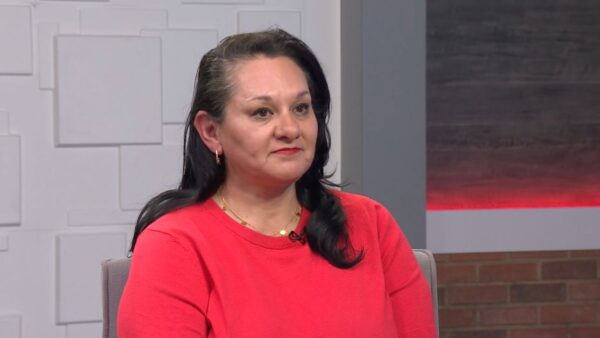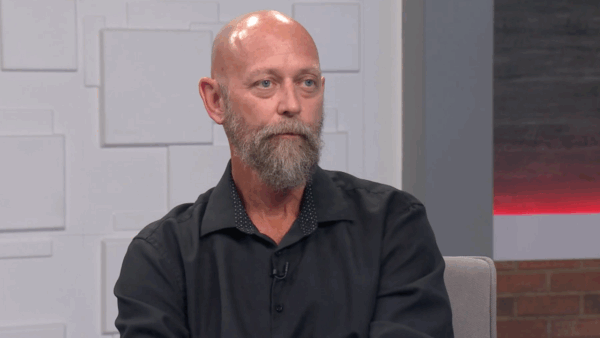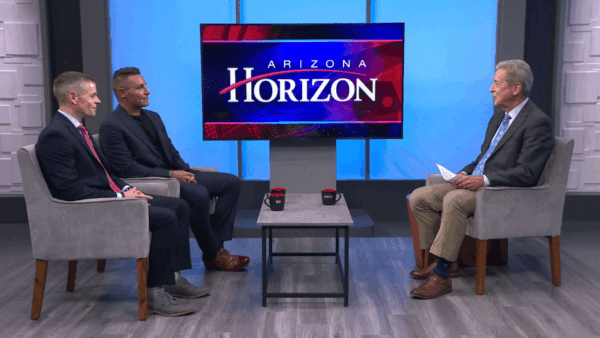The Arizona Department of Health Services released a set of revised rules regarding medical marijuana. The changes focus on a number of issues including doctor-patient relationships and the location of marijuana dispensaries. Will Humble, director of the Arizona Department of Health Services, discusses.
Ted Simons: The Arizona department of health services today released a set of revised rules regarding medical marijuana. The changes focus on a number of issues, including doctor-patient relationships and the location of marijuana dispensaries. Here to talk about all this is Will Humble, director of the Arizona department of health services. Good to see you again.
Will Humble: Good evening. Thanks.
Ted Simons: We've got a new set of draft rules. What changed?
Will Humble: Well, we changed several things, probably the biggest change is some criteria that we put into this new rule to sort of guide where the ultimate dispensaries will go across the state. We had a couple of objectives we wanted to accomplish. One is to get the rural parts of the state easier access to medical marijuana, and at the same time minimize the number of grow your own parts of the state. One of the things in the initiative is that if you live more than 25 miles from the nearest dispensary, the you get to grow your own. So by encouraging applications in the rural parts of the state, we expect to have fewer grow-your-own areas and at the same time, get folks in the rural parts of the state better access so they don't have to drive as far. One of the other things the geographic distribution did is it avoided urban clustering in the valley and in places like Tuscon, so you didn't get -- so we won't have a bunch of dispensaries right next to each other, it will be spread out throughout the valley.
Ted Simons: Now, correct me if I'm wrong, but wasn't there also a concern regarding multiple candidates for dispensaries in certain areas? Was that addressed as well?
Will Humble: One of the things we addressed in this draft is we said, look, here are the geographic boundaries. In Phoenix a lot of them look like the villages that the Phoenix -- that Phoenix has. When -- in each one of those components, if we get more than one application that's complete and they meet all the requirements, what we're proposing in this next draft is to take a random drawing of those applicants and then award a dispensary certification to one of those applicants. That doesn't mean they can -- that doesn't mean they can start dispensing right away. What it means is they have permission to proceed, get all the local permits that they'll need, get their certificate of occupancy for their jurisdiction, get their inventory control, their security, everything else they're going to need and at some point down the road probably in the fall, they could call us for their final inspection, we'll release that restriction and they can begin dispensing.
Ted Simons: OK That dynamic all long with what you mentioned earlier in terms of encouraging rural areas, encouraging dispensaries in rural areas, how does that work? I got a funny feeling certain parts of town there will be a lot of folks wanting to open dispensary, but when you talk about areas like a Kingman or Show Low or something, it might be hard to find some folks.
Will Humble: One of the things that we did in this rule -- in this draft, remember in the first draft we had a requirement that each dispensary grow 70% of its own inventory. We've removed that restriction, we included some additional inventory controls and by doing that we've opened the rural parts of the state up to -- so they could be a wholesale market of legitimate marijuana that can flow from, say, a less expensive cultivation facility in the rural part of the state, to the urban core where it's more expensive to cultivate. So by -- this would not have worked had we not removed that 70/30 restriction, so by removing that 70/30 we open that business up, and it also hinges on having good inventory controls. And during the comment period we got really good comments in from the public who gave us some exact language about how you track that marijuana from its seed to the dispensary. So we're happy about that.
Ted Simons: Interesting. Transportation of marijuana was also addressed. What are we got here?
Will Humble: We got some comments from cities and law enforcement during the first draft that said, hey look if we're on a traffic stop and we pull somebody over and the van is full of marijuana, we need to know if this is real legitimate marijuana as part after transfer from a cultivation facility to a dispensary or whether this is cartel stuff. So we got some really good public comment on that aspect as well, and we've got we think very well-defined criteria for transportation now that includes certification, essentially some paper that tracks the marijuana from the source to the dispensary.
Ted Simons: As far as a doctor attesting to a patient having a certain condition, making a certain diagnosis, and an in-person exam, was that in the original rule?
Will Humble: Right. That was in the original rule. We refined that a little bit in this next iteration of the draft. My -- this has been my top priority all along, to make sure we're holding physicians accountable for the recommendations that they write so that we can avoid certifications going to people for purely recreational purposes. And so in the initial draft we basically just had a definition of what that physician-patient relationship was. In this next iteration, what we did is we actually met with the four medical boards that license physicians in the state and we asked them, what do you need to hold physicians accountable, and what do you need to ensure that you can take action on a physician who appears to be acting unprofessionally? And so we took that information and we were actually in the recommendation, we're asking physicians to make a series of attestations about the purity of their medical records, that they have, about the fact they did a physical examination. So we've got a trail on paper to help establish that there was a true physician-patient relationship, that there was a true assessment of their physical condition, and that they've looked at the medical records and have them on hand.
Ted Simons: The public comments obviously driving a lot of this. Were you surprised how many comments were there and how effective they were?
Will Humble: I wasn't surprised at the number. We got 1500 comments in from the public. I was -- I have to say, pleasantly surprised with the quality. To be sure, many of the comments were just, you know, the voters have spoken, let recreational use be the norm, get out of my way Mr. Humble, who do you think you are? But we also got lots of constructive comments, especially from cities, law enforcement, fire, police organizations, various stakeholder groups, law firms, etc., so we -- and it's all post order our website so everyone can see the comments that we got. So I was really impressed with the quality of the public comment that we got and how effective those comments were at driving us to this next iteration.
Ted Simons: The process is back in the public hands now, correct?
Will Humble: Right. For the next couple of weeks it will be on up our website. We're asking folks to go to that website, everyone in Arizona, we're looking for comments from everybody, and send us electronic comments for what you think. Ways that we can improve the next version. Because on the 28th we expect -- of March we expect to have the final rules set forward, and this law takes effect on April 14th. So there's not much time left, and we really do need comments from everybody.
Ted Simons: If it takes effect April 14th you figure late summer, early fall, doors open?
Will Humble: Well, we'll be expecting to get applications in for qualified patient cards right away. We don't expect to see dispensaries up and running until late summer probably early fall.
Ted Simons: All right. Good to see you. Thanks for joining us.
Will Humble:director, Arizona Department of Health Services;























